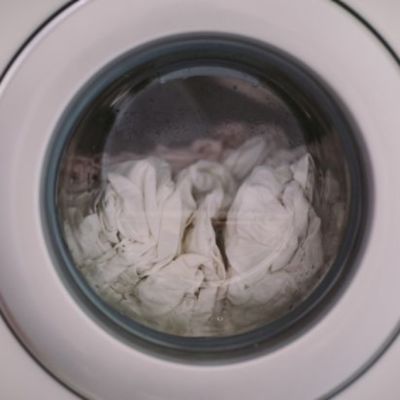12 myths about bedding that need to be debunked

Bed is where you start and end your day – so why not make it your sanctuary? Knowing the right way to wash, dry and buy bedding is essential for creating a clean and cosy sleep environment.
Will a firmer mattress fix the cricks in your back? How much is thread count a factor when shopping for cotton sheets? We dispel some common myths and uncover the facts.
Myth #1: Higher thread counts mean better quality
Thread count refers to the number of threads per square inch of fabric. It’s generally been used as an indicator of quality – that is, the higher the count, the more luxurious the feel – but this isn’t entirely accurate. A high-quality sheet is usually about 300 to 400 thread count, because only so many pieces of thread can fit into a specific space. Beyond this, manufacturers have been known to add extra threads called “picks” to push the thread count up into the thousands – without enhancing the quality of the finish. If you see low-priced sheets with thread counts over 600, you’re right to be sceptical.
Myth #2: All cottons feel the same
It’s not just the material you have to consider – it’s how the fabric is woven. Words such as “oxford”, “percale” and “sateen” indicate the make-up of warp (vertical) and weft (horizontal) threads. For example, oxford weaves feature twice as many warp threads as weft threads, producing a soft and heavy feel. Percale means the threads have been crossed over and under, tightly woven to produce a matte finish and crisp and clean feel. A sateen weave, on the other hand, has weft threads tightly packed together, producing a silky feel and high lustre on one side of the fabric.
Myth #3: Good sheets will last you years and years
Like your clothing, repeated washing (and the fact that you lie on them every night) will cause bedsheets to wear. Experts recommend replacing them every 18 to 24 months. Don’t you want an excuse to buy new bedding any way?
Myth #4: Use the hottest cycle to wash your sheets
The highest levels of shrinkage occur with 100 per cent cotton. Hot water and hot and long dryer cycles won’t do soft, natural fibres like Egyptian cotton and Pima any favours. Never exceed 40 degrees.

Experts recommend replacing sheets every 18 to 24 months. Photo: Trinette Reed Photography
Myth #5: Use heavy-duty detergents to wash your sheets
Using a harsh detergent is just as bad as using too much detergent, causing damage to your sheets – especially if they’re of fine quality. Your bedding never gets as dirty as your jeans or gym gear so only a gentle detergent (even a baby detergent) is necessary. They’ll last longer this way and won’t irritate sensitive skin.
Myth #6: The heavier your duvet, the warmer you are
Actually, warmth comes down to fill power – that is, the way of measuring down’s insulating ability and quality. A high fill power means the filling is light and airy, but insulates well. The better the down in your duvet, the less down is needed to keep you warm – and therefore the lighter it will be.
Myth #7: Your duvet cover need only go in every second wash
Sure, you could have got away with it in university, but as an adult, you should really be washing your duvet cover every time you wash your flat and fitted sheets. It’s exposed to just as much as the rest of your bedding.

Using a harsh detergent can do a lot of damage to your sheets Photo: Trinette Reed Photography
Myth #8: You should toss your sheets in with your towels
They may both be white, but washing and drying your sheets with your towels is not a good idea. Towels create a lot of lint, which quickly adheres to your sheets – particularly if you use a tumble dryer. Towels also cause a lot of friction – wearing down your sheets quicker and reducing their lifespan.
Myth #9: Firm, hard mattresses are better for bad backs
People often choose hard, firm mattresses thinking it will help straighten out their backs – this isn’t the case. Don’t confuse “firm” for “supportive”. The best sleep surface caters to your spine’s natural curvature – creating the least amount of pressure. A too-firm mattress will force your body into an unnatural position, inhibiting circulation and creating intense pressure points on your lower back.
Myth #10: Your salesperson knows what you need
Salespeople often work on commission – which is why they may be pushing the more-expensive options. Take your time to discuss your exact needs and concerns. Don’t be swayed by big names (it’s the quality of the materials that count) and before you commit, research product reviews online. Also watch for phrases such as “lifetime warranty”, which mean next to nothing. Whose lifetime – yours, the product’s, or the company’s? Who is the warrant for? Do you have to register for it?

Pillow fighting is the only decent excuse for extra pillows. Photo: Stocksy
You spend a third of your life sleeping and are likely to keep your mattress for a decade or more – so spend the time ensuring you’re buying the right one for you. A few minutes on the shop floor just won’t do. A lot of companies provide the option to take one home with you for a few weeks (or months), to ensure you (and your bedfellow) are completely happy. Look for brands that offer a reasonable trial period and return shipping rates.
Myth #12: You can never have too many pillows
Between shams, bolsters and lumbar options, there are plenty of pillow options on the market. Yet overloading your bed can inhibit your comfort – not to mention looking crowded and creating a blockade to your sheets! If you must have multiples, keep it to two to sleep on and two for decoration (to be used when you’re sitting up in bed to read).
We recommend
We thought you might like
States
Capital Cities
Capital Cities - Rentals
Popular Areas
Allhomes
More










